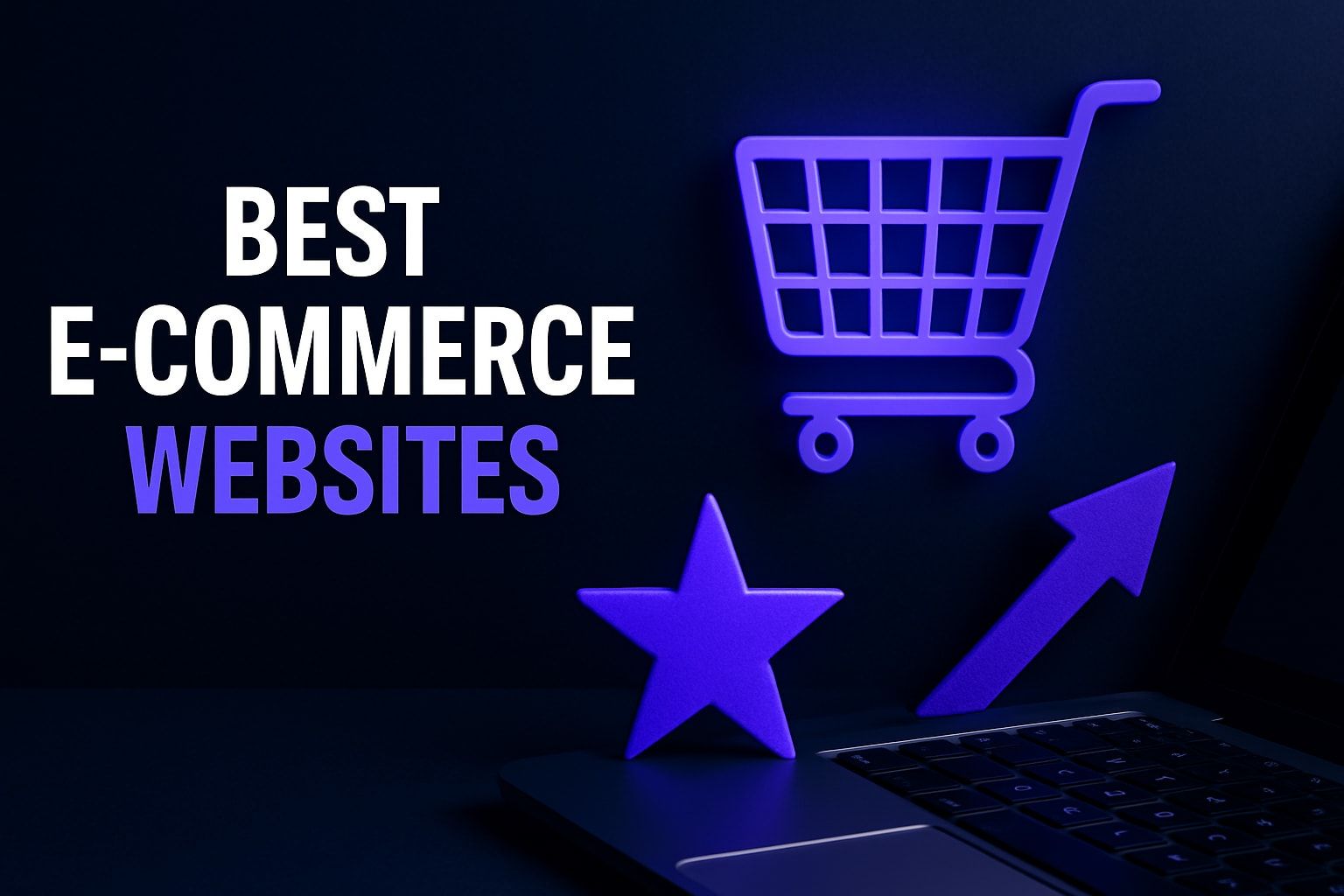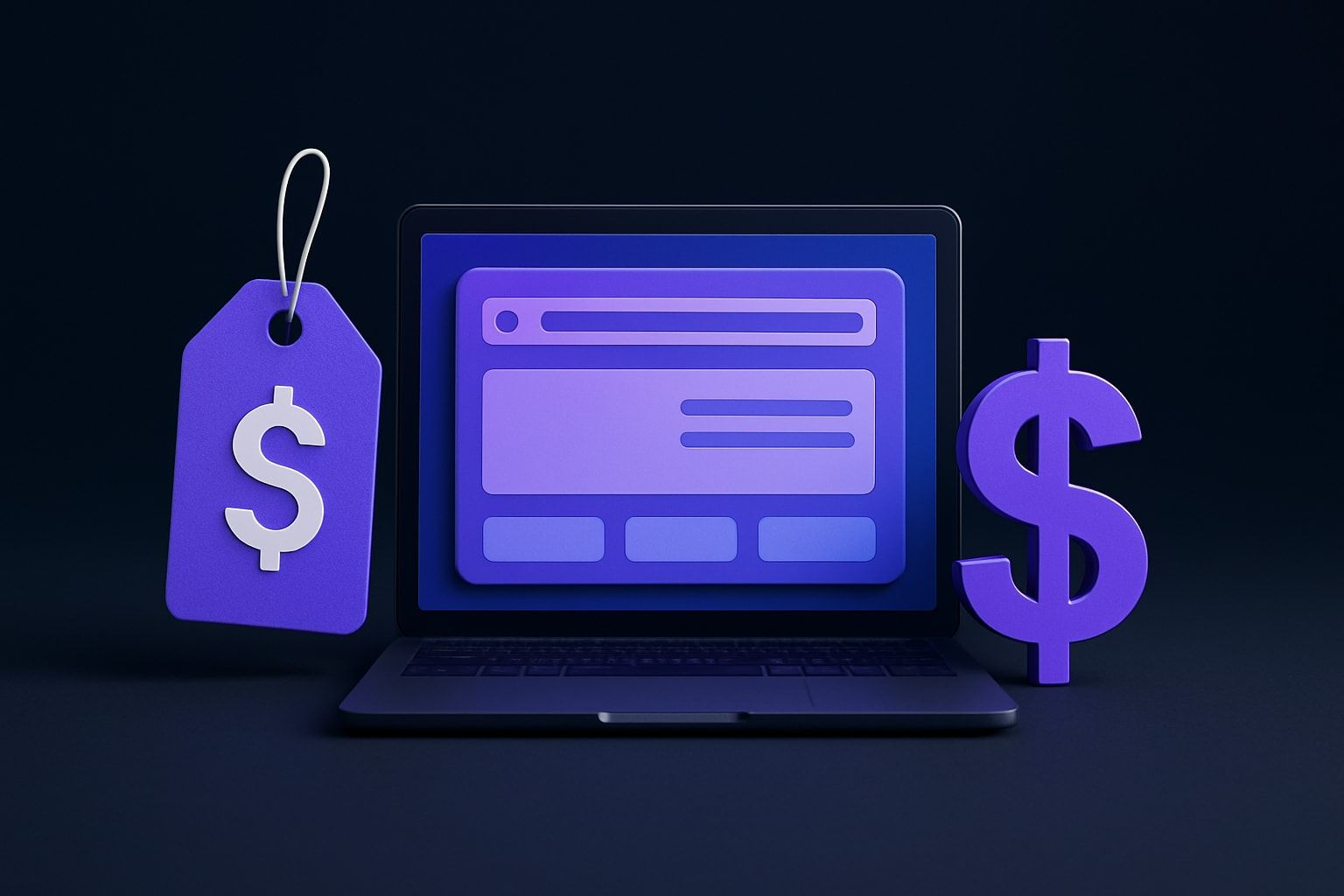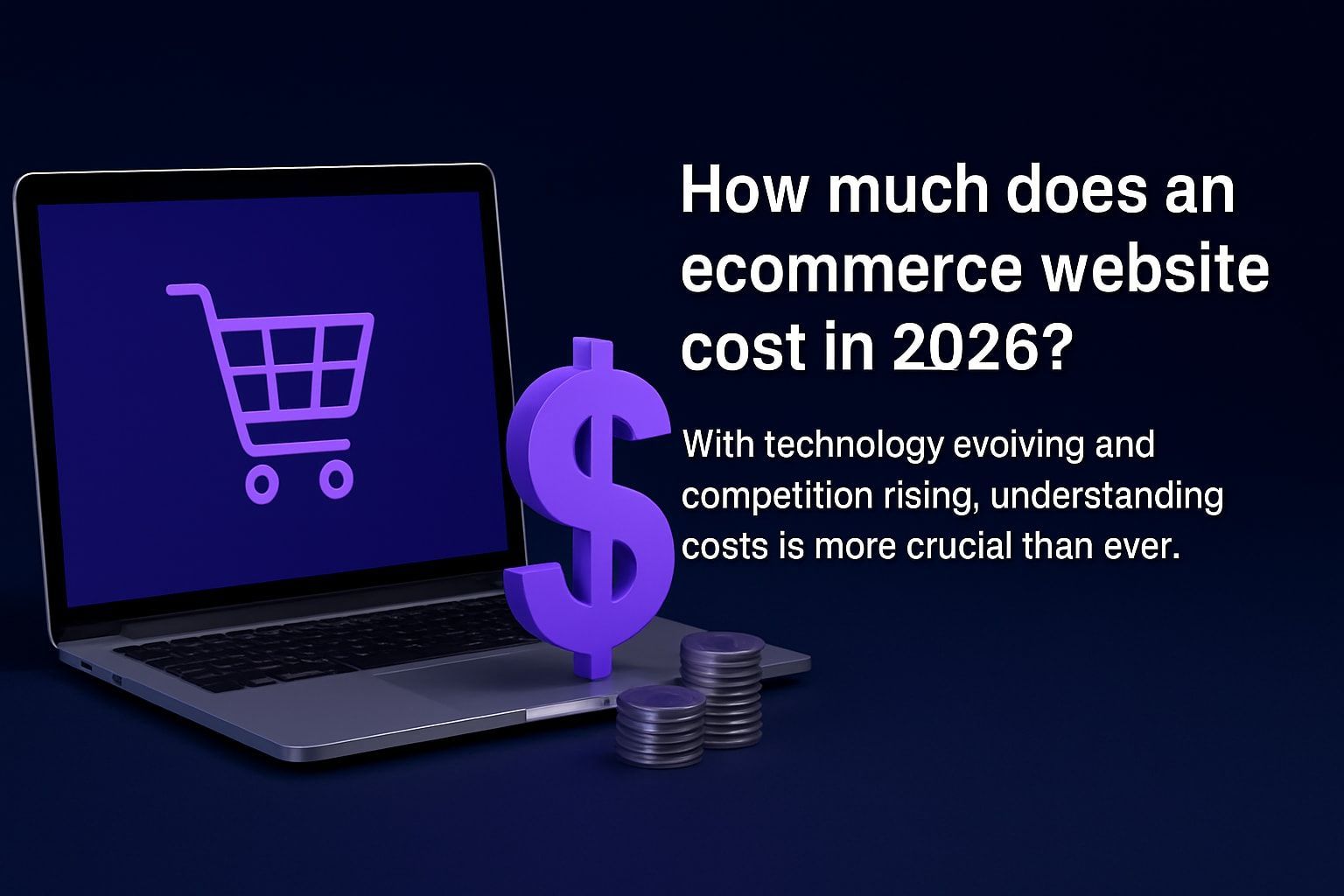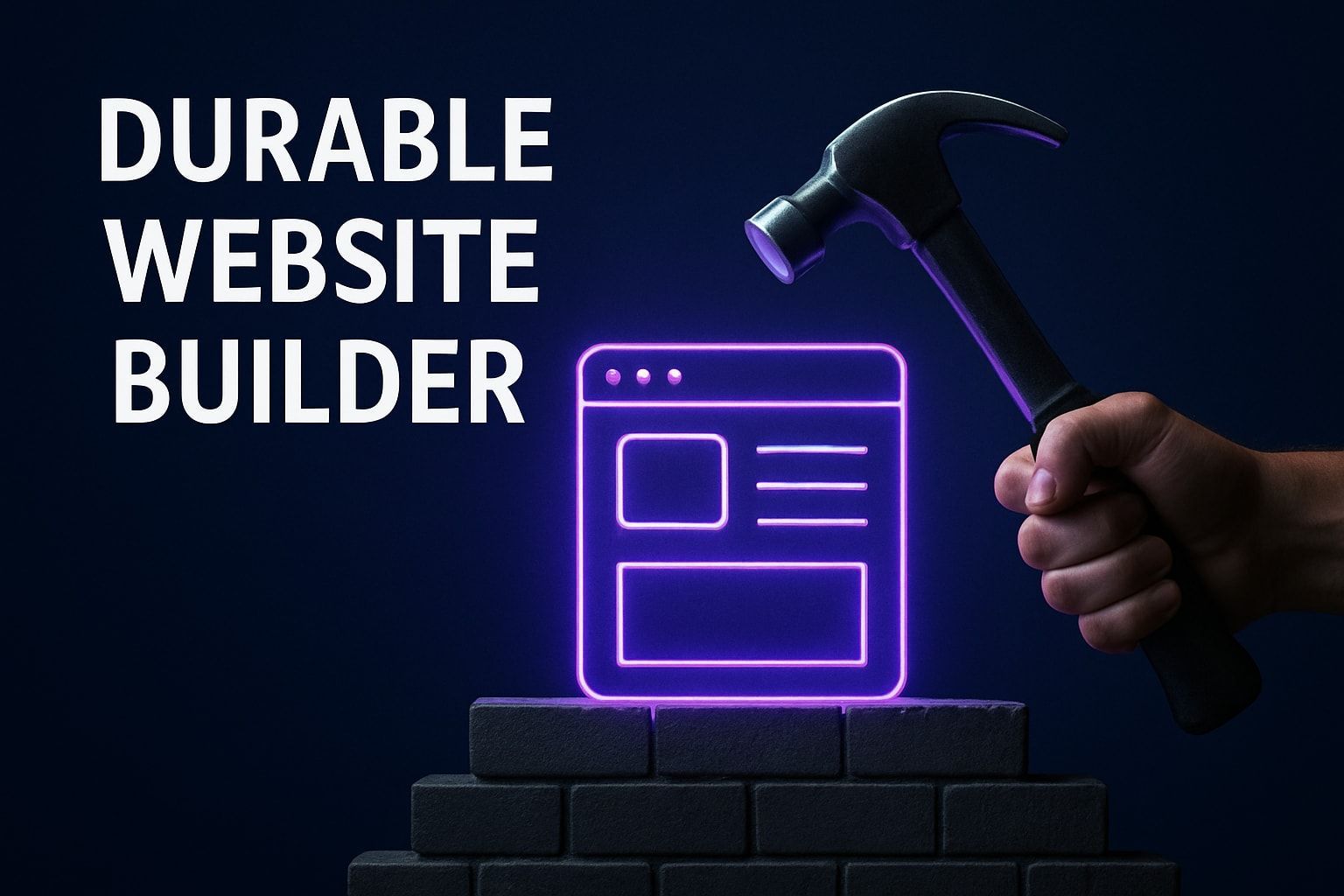Landing Pages Design Guide: Best Practices for 2025
In 2025, landing pages design is more crucial than ever for skyrocketing conversions and fueling business growth. If you want to stay ahead, mastering the latest best practices isn’t optional—it’s essential.
This guide unlocks the strategies, trends, and actionable tips you need to outperform your competition. Discover what makes a high-converting landing page, explore the most effective design trends, and learn the proven steps to create your own results-driven pages.
Ready to transform your marketing? Let’s dive in and turn your landing pages into conversion powerhouses.
Understanding Landing Pages: Definition, Purpose, and Impact
A strong landing pages design is the cornerstone of digital marketing success in 2025. But what exactly sets a landing page apart from other web pages, and why does its structure matter so much for conversions? Let’s break down the essentials.
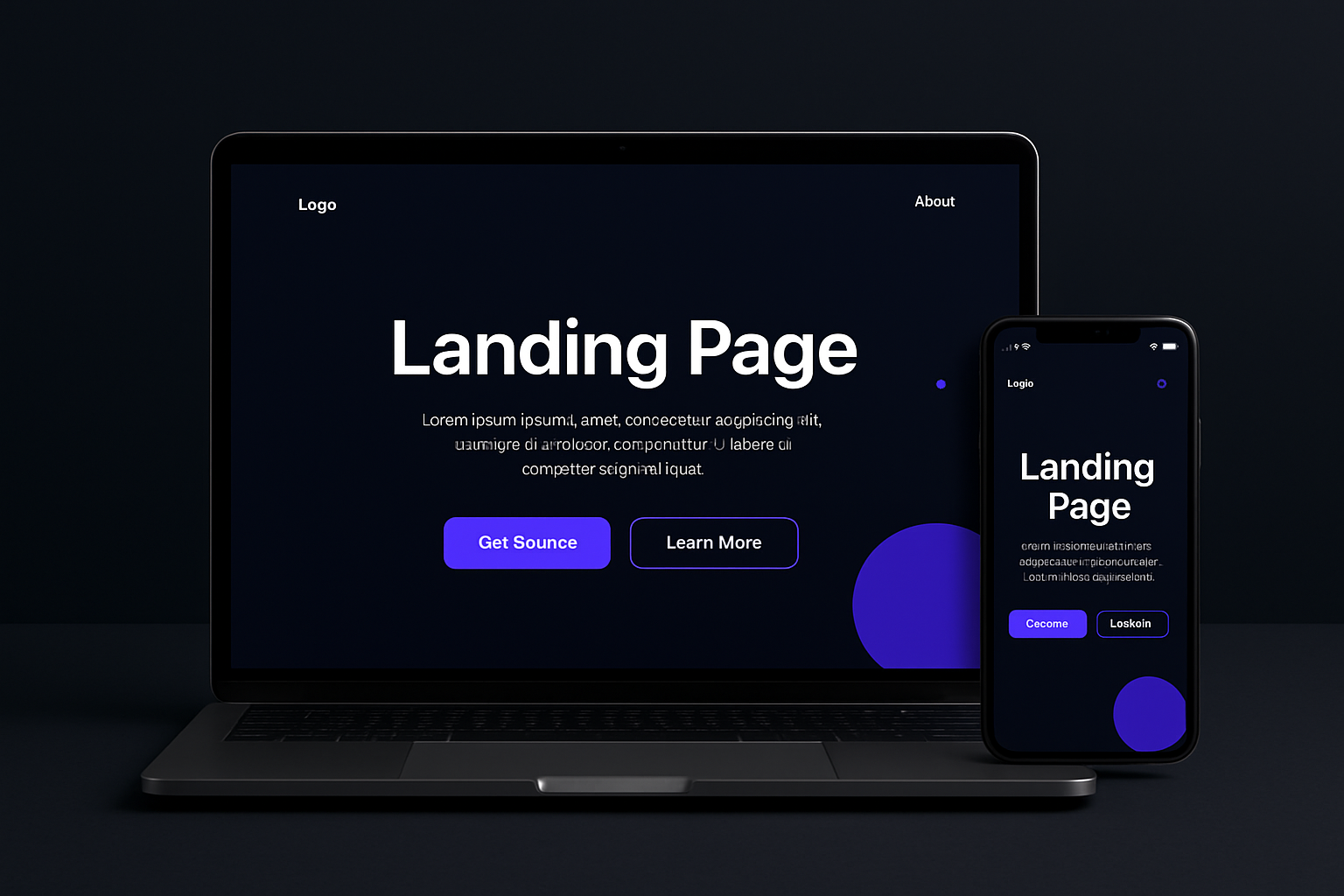
What Is a Landing Page?
A landing page is a standalone web page crafted with a single, focused goal—whether it’s capturing leads, making a sale, or prompting signups. Unlike a homepage, which offers broad navigation and multiple pathways, a landing page guides visitors toward one clear action.
The difference is all about intent. Homepages introduce your brand and offer choices, while a landing pages design removes distractions and streamlines the user journey. In a marketing funnel, landing pages act as conversion gateways, moving prospects closer to your business objective.
For example, a product launch landing page spotlights one offer and a single call-to-action, while your main site homepage is built for exploration. According to landing page conversion statistics, well-designed landing pages can boost conversion rates by up to 300% compared to generic web pages. Key elements include minimal navigation, a strong headline, targeted messaging, and just one CTA.
The Purpose of Landing Pages in 2025
In 2025, landing pages design is more versatile than ever, powering lead generation, online sales, event registrations, and newsletter signups. These pages support multi-channel campaigns—think paid ads, email, social media, and influencer marketing—by matching the message and intent to each audience segment.
Landing pages nurture prospects along the sales funnel, providing just enough information and incentive to prompt action. For example, you might use different landing pages for various ad campaigns to better resonate with individual customer groups.
Aligning your landing pages design with your broader marketing goals is essential. Each page should have a clear, measurable objective that fits seamlessly into your overall strategy, ensuring every visitor lands in the right place at the right time.
The Impact of Well-Designed Landing Pages
The right landing pages design can dramatically improve your marketing results. High-performing landing pages drive up conversion rates, boost ROI, and lower customer acquisition costs.
Did you know that 48% of marketers create a new landing page for every campaign? This data highlights the direct link between targeted design and campaign success. Well-crafted pages inspire trust and engagement, making it easier for visitors to take action.
Consider a business that revamped its signup page using focused messaging, streamlined forms, and social proof. The result? Signups soared. On the flip side, poorly designed landing pages lead to high bounce rates and missed opportunities, costing you valuable leads and revenue.
Types of Landing Pages for Modern Campaigns
There are several landing pages design types, each serving a unique purpose:
- Lead capture (squeeze pages)
- Click-through pages
- Sales pages
- Event registration pages
- Product launch pages
Each has a different structure and call-to-action focus. For instance, a simple signup page eliminates distractions, while a product detail page for ecommerce highlights features and reviews alongside a purchase button.
Choosing the right landing pages design comes down to understanding your audience’s intent. A targeted approach ensures your message matches the visitor’s needs, leading to higher conversions and a better user experience.
Essential Elements of High-Converting Landing Pages
Unlocking the full potential of landing pages design means mastering a handful of core elements that consistently drive conversions. Every high-performing landing page blends attention-grabbing content, clear calls to action, trust-building signals, and engaging visuals. Let’s break down each crucial building block, so you can turn more visitors into loyal customers in 2025.
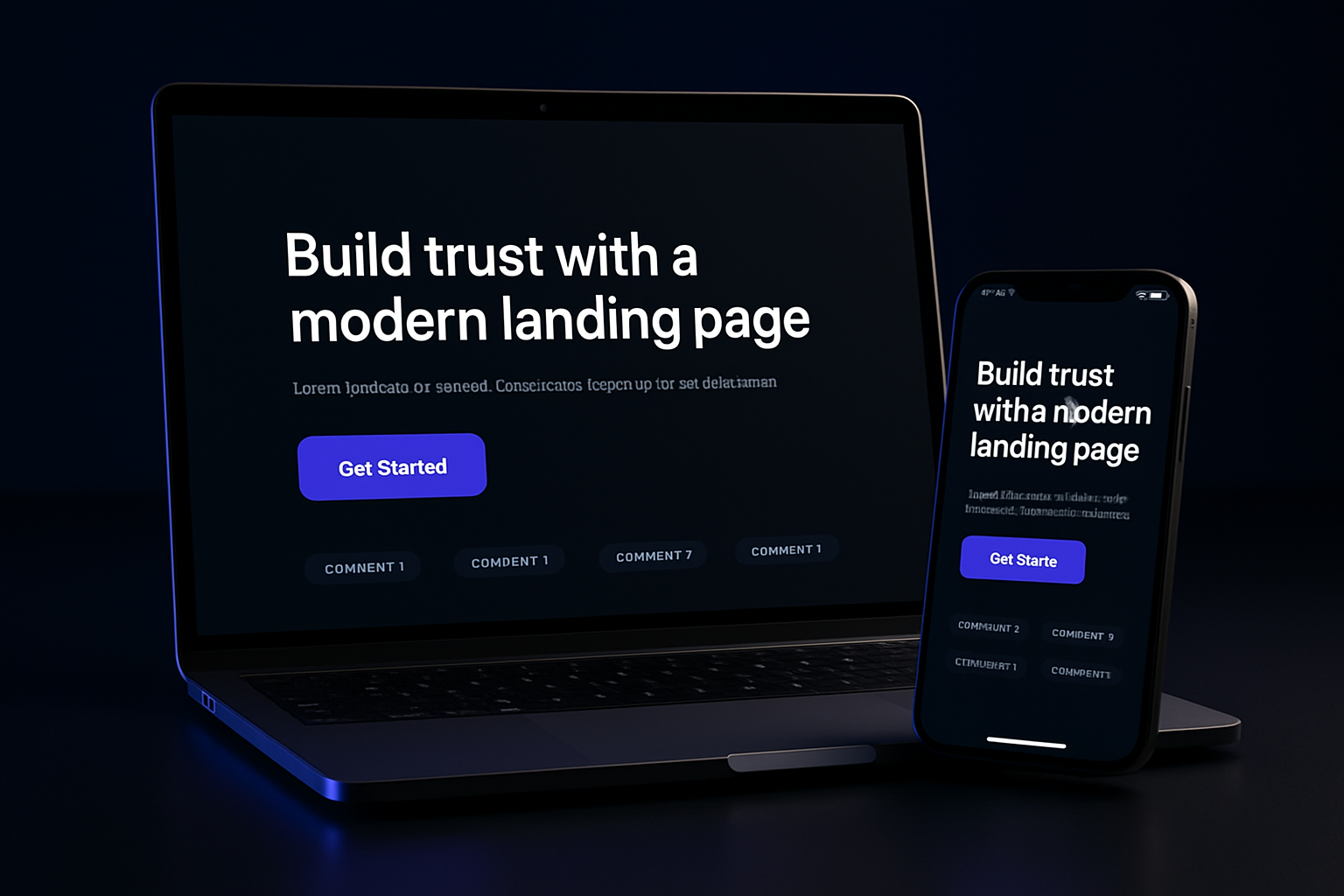
Crafting Compelling Headlines and Subheads
The headline is your landing page's handshake—it must instantly communicate value and capture attention. Effective landing pages design always starts with a bold, benefit-driven headline that speaks directly to your audience’s needs.
Tips for headline and subhead success:
- Use action words and clear benefits.
- Place the main promise above the fold.
- Support with a concise subhead that clarifies the offer.
- A/B test different headline variations for engagement.
For example, swapping generic headlines for problem-solving statements can boost click-through rates. According to Mailchimp, even small wording tweaks can create significant lifts in conversions.
Designing Clear and Actionable CTAs
A strong call-to-action (CTA) is the engine of your landing pages design. The best CTAs stand out visually and communicate exactly what happens next, removing any guesswork for the user.
Best practices for CTA buttons:
- Use a contrasting color like #8b3bff to draw the eye.
- Surround with whitespace for maximum visibility.
- Place the CTA above the fold and repeat for longer pages.
- Test sticky CTAs so the action is always accessible.
Experiment with CTA copy, such as “Get Started Free” versus “See Plans.” The right button text can dramatically influence conversion rates.
Optimizing Forms for Maximum Conversions
Forms are the gateway to your leads. In landing pages design, less is more—short forms reduce friction and boost completion rates.
Form optimization strategies:
- Limit required fields to essentials.
- Use smart defaults and autofill to save time.
- Apply progressive profiling for returning visitors.
- Design forms for mobile with large, tap-friendly fields.
A newsletter signup form with just an email field often converts up to 120% better than lengthy forms. Always test form length and placement for your audience.
Leveraging Trust Signals and Social Proof
Trust is the secret ingredient in landing pages design. Without credibility, even the best offer can fall flat.
How to instill trust and social proof:
- Display testimonials and customer reviews prominently.
- Add recognizable client logos and awards.
- Link to privacy policies and data protection statements.
- Highlight secure payment or certification badges.
Did you know 92% of consumers read online reviews before converting? Placing real customer quotes directly on your page can dramatically increase trust and conversions. For more actionable tips, explore these landing page best practices.
Visual Hierarchy, Imagery, and Multimedia
Great visuals guide visitors through your landing pages design and reinforce your message. Use high-quality images, engaging videos, and a clear visual hierarchy to focus attention on the CTA.
Visual design essentials:
- Feature product images or lifestyle shots that align with your offer.
- Use explainer videos to simplify complex ideas.
- Arrange content so the eye naturally moves from headline to CTA.
- Keep the layout clean and uncluttered.
Data shows that pages with relevant images convert up to 80% better than text-only pages. Every visual element should support your message and nudge users toward action.
Landing Page Design Trends and Best Practices for 2025
Staying ahead in landing pages design means embracing innovation and adapting to user expectations. In 2025, the landscape is evolving fast, with new trends shaping how brands capture attention and drive conversions. From minimalist layouts to advanced personalization, these best practices ensure your landing pages design delivers real results.
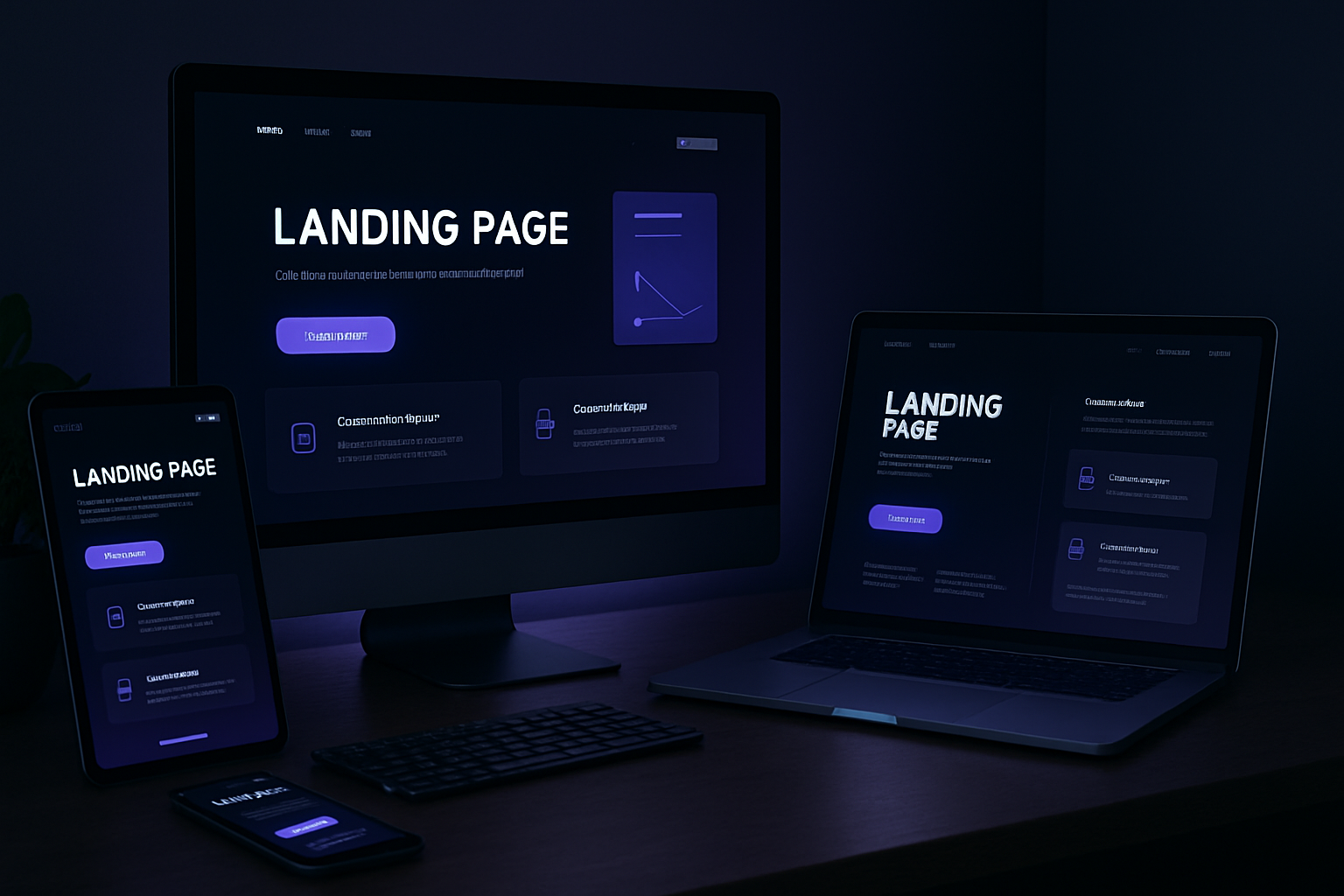
Minimalist, Distraction-Free Layouts
Minimalism is at the core of effective landing pages design in 2025. By removing unnecessary clutter, you help visitors focus on your core message and primary CTA. Clean interfaces with ample whitespace make content easy to scan and digest.
Consider eliminating top navigation menus and sidebars. Instead, use a single, focused goal for each page. For example, single-page, no-scroll sign-up forms are gaining traction for their simplicity and efficiency. According to recent data, distraction-free pages reduce bounce rates by 40%. For more inspiration, check out the latest Landing page design trends 2025.
Mobile-First and Responsive Design
With mobile traffic dominating, mobile-first landing pages design is now non-negotiable. Responsive templates ensure your content looks great on every device, from smartphones to desktops. Flexible layouts and scalable images improve user experience and prevent frustrating pinch-and-zoom moments.
Mobile-friendly forms and CTAs are a must. For instance, sticky mobile CTA buttons keep actions accessible, boosting conversion rates. Recent studies show that 86% of top landing pages are mobile-optimized, proving the impact of prioritizing mobile in your landing pages design.
Personalization and Dynamic Content
Personalization is revolutionizing landing pages design in 2025. Tailor your content, visuals, and offers to user segments, behaviors, or even location. Dynamic elements like returning visitor messages or location-based deals can dramatically increase engagement.
AI-powered personalization enables real-time customization at scale. For example, ecommerce brands can showcase relevant products based on browsing history. Data reveals that personalized landing pages design can convert 202% better than generic alternatives, making this a top trend to implement.
Fast Load Times and Core Web Vitals
Speed remains a top priority for landing pages design. Slow load times frustrate users and hurt conversions. Optimize your images, minimize scripts, and leverage fast hosting to keep your pages loading instantly.
A one-second delay can cut conversions by 7%, so every millisecond counts. Tools like Google PageSpeed Insights can help you monitor and improve your Core Web Vitals. Prioritizing fast landing pages design not only boosts user experience but also strengthens your SEO performance.
Accessibility and Inclusive Design
Accessible landing pages design ensures everyone can interact with your content, regardless of ability. Adhering to WCAG and ADA standards is both a best practice and an ethical responsibility. Use high-contrast colors, descriptive alt text, and intuitive keyboard navigation.
Accessible forms and clearly labeled buttons improve usability for all visitors. With 15% of the global population living with a disability, inclusive landing pages design can significantly expand your reach and drive more conversions.
Visual Storytelling and Brand Consistency
Compelling visuals and a cohesive brand identity elevate your landing pages design. Use high-quality images, videos, and consistent color schemes to reinforce your message and build trust. Visual storytelling helps create an emotional connection with visitors.
For example, lifestyle images showing your product in use can inspire action. Consistent branding across your landing pages design increases recognition and credibility, making users more likely to engage and convert.
Data-Driven Optimization: A/B Testing and Analytics
Continuous improvement is crucial for landing pages design success. Run A/B tests on headlines, layouts, and CTAs to discover what resonates with your audience. Use analytics tools to monitor conversion rates, heatmaps, and user journeys.
Companies that embrace A/B testing see conversion improvements of 20–30%. By letting data guide your decisions, your landing pages design will become more effective with each iteration, ensuring you stay ahead of the competition.
Step-by-Step Guide: Designing a Landing Page That Converts in 2025
Crafting a powerful landing pages design in 2025 means following a proven, step-by-step approach that aligns with user expectations and business goals. Whether you’re building your first page or optimizing an existing one, these seven essential steps will guide you to higher conversions and campaign success.
Step 1: Define Your Goal and Target Audience
Every high-performing landing pages design begins with a crystal-clear objective. Are you aiming to generate leads, drive sales, collect event registrations, or boost newsletter signups? Pinpointing your primary goal keeps your messaging and layout focused.
Next, segment your audience. Research their demographics, pain points, and preferences. The more tailored your page, the higher your conversion rates. For example, use different landing pages design variations for different customer segments, such as first-time visitors versus returning customers.
Set measurable KPIs—like conversion rate, cost per acquisition, or form completions—to track your success and guide ongoing improvements.
Step 2: Map Out the Structure and Content
A well-organized structure is the backbone of effective landing pages design. Start by wireframing your layout: place your headline, subhead, main image, form, and CTA where they’ll have the most impact. Prioritize above-the-fold content so visitors instantly see your value proposition.
Use a checklist to ensure you include all essential elements: compelling headline, supporting copy, trust signals, and a clear call-to-action. For example, placing your CTA and key benefits in the first viewport can significantly boost engagement.
Keep the flow intuitive, guiding users step by step toward your conversion goal.
Step 3: Design for Visual Impact and Usability
Choose a clean, mobile-responsive template that matches your brand’s personality. Select color schemes and fonts that reinforce your identity and make your CTA stand out. Use high-quality lifestyle images and product shots to support your message and build trust.
Ensure your landing pages design follows a strong visual hierarchy, drawing the eye to the CTA. Consider using an AI-powered landing page builder to streamline this process, with drag-and-drop editors and customizable templates for rapid, professional results.
A visually appealing page isn’t just attractive—it makes taking action effortless for your audience.
Step 4: Create Compelling Copy and Offers
Your landing pages design is only as strong as its messaging. Write attention-grabbing, benefit-focused headlines that clearly explain what’s in it for the visitor. Keep body copy concise and persuasive—break up information with bullet points for easy scanning.
Craft irresistible offers, such as discounts, free trials, or valuable lead magnets. For urgency, try time-sensitive promo codes or limited-time deals. For example, a headline like “Get 20% Off Today Only” can motivate immediate action.
Make sure your copy and offer align perfectly with your target audience’s needs and expectations.
Step 5: Optimize Forms and Trust Elements
Forms are the gateway to conversions in landing pages design. Keep them short—ask only for essential information to reduce friction and boost completion rates. Use smart defaults and autofill features to make the process seamless.
Add trust badges, customer testimonials, and privacy policy links to reassure visitors their data is safe. Display real customer reviews and social proof directly on the page to build credibility. Always ensure your forms comply with GDPR, CCPA, and other relevant data regulations.
Trust and simplicity turn hesitant visitors into enthusiastic leads.
Step 6: Test, Launch, and Analyze
Before going live, preview your landing pages design on multiple devices and browsers to ensure everything works flawlessly. Run A/B tests on headlines, images, and CTAs to discover what resonates best with your audience.
Leverage analytics tools like Google Analytics to monitor conversion rates, track user journeys, and identify improvement areas. Use heatmaps to see where visitors click and where they drop off.
Iterate based on real data—refining your landing pages design continuously leads to better results over time.
Step 7: Promote and Integrate with Campaigns
Once your landing pages design is live, promote it across all your marketing channels: ads, emails, social media, and influencer campaigns. Use UTM codes to track where your traffic is coming from and which campaigns perform best.
Integrate your landing page with CRM and email marketing tools for seamless lead follow-up and nurturing. For example, linking your page to a targeted ad campaign ensures the right message reaches the right audience at the right time.
A well-integrated landing pages design amplifies your reach and maximizes ROI.
Tools and Platforms for Building Modern Landing Pages
The right tools can make or break your landing pages design strategy in 2025. With so many options available, choosing the ideal platform is crucial for building high-converting, visually stunning pages—no matter your skill level or marketing needs.
DIY Website Builders and No-Code Platforms
DIY website builders have democratized landing pages design, allowing anyone to launch campaigns without writing code. Platforms like Mailchimp, Google Sites, Wix, and Squarespace offer drag-and-drop interfaces, customizable templates, and built-in hosting.
Pros:
- Easy for beginners
- Quick to launch
- Affordable or free options
Cons:
- Limited advanced features
- Template-based customization
For example, Google Sites lets you create fast, no-code landing pages design projects in minutes. According to recent stats, 48% of marketers now use these DIY builders to speed up campaign launches and test new ideas.
Advanced Landing Page Platforms
When your landing pages design needs outgrow basic builders, consider dedicated platforms like Unbounce, Instapage, and Leadpages. These tools provide robust features tailored for marketers running high-volume or complex campaigns.
| Platform | Key Features | Best For |
|---|---|---|
| Unbounce | Dynamic content, A/B tests | Agencies, enterprises |
| Instapage | Personalization, analytics | Large teams, high-traffic |
| Leadpages | Integrations, lead capture | SMBs, solopreneurs |
Advanced platforms offer deeper A/B testing, dynamic content, and seamless integrations—perfect for scaling your landing pages design strategy and optimizing every campaign.
Avantiy: AI-Powered Landing Page Design for 2025
Avantiy is revolutionizing landing pages design with its AI-driven website builder. It features a modern drag-and-drop editor, fully customizable templates, and built-in SEO tools for effortless page creation.
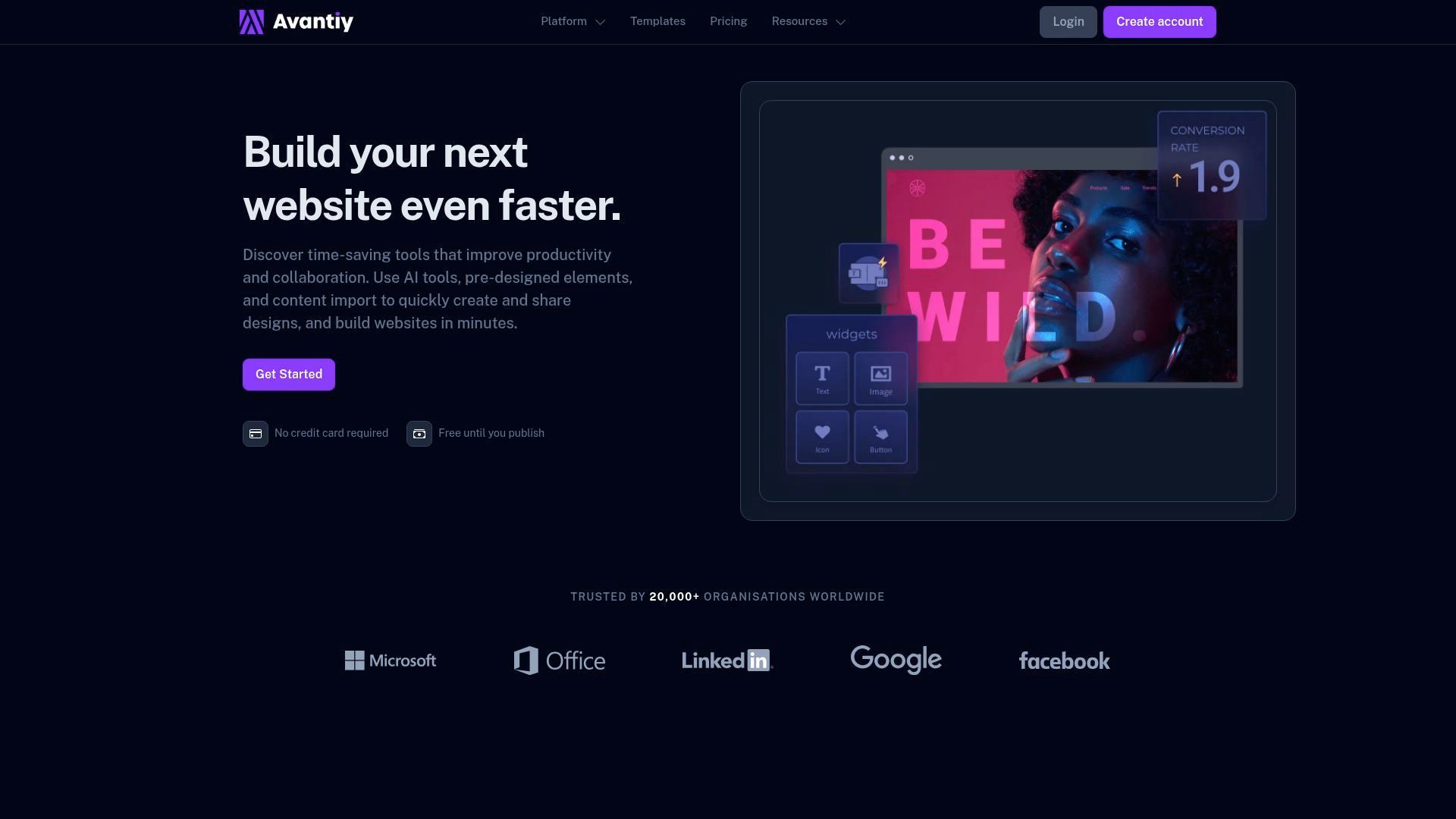
With AI-generated content and design suggestions, users can quickly launch stunning, high-converting pages tailored to their goals. Avantiy also integrates with over 400 apps, enabling advanced analytics and marketing automation. For inspiration, check out their Landing page templates gallery to see the latest trends in action.
Ideal for individuals, startups, and SMBs, Avantiy streamlines the landing pages design process—delivering mobile-friendly, professional results in record time.
Integration, Analytics, and Optimization Tools
No landing pages design strategy is complete without analytics and integrations. Tools like Google Analytics, Hotjar, and built-in platform reporting help you track user behavior and conversion rates.
Seamless integration with CRM, email marketing, and ad platforms ensures every lead is captured and nurtured. For in-depth strategies, consider exploring this Landing page optimization guide to boost your performance even further.
Businesses using integrated analytics for landing pages design are twice as likely to see improvements in ROI and campaign success.
Real-World Examples and Case Studies of Effective Landing Pages
Landing pages design success stories offer valuable insights for anyone aiming to boost conversions in 2025. By analyzing what works across industries and campaigns, you can identify key strategies to apply to your own projects.
High-Converting Landing Page Examples by Industry
Effective landing pages design is never one-size-fits-all. For ecommerce, top performers often feature bold product images, a clear value proposition, and a prominent CTA. SaaS pages use demos, concise copy, and trust badges. Event landing pages focus on urgency, countdown timers, and social proof, while B2B pages highlight case studies and client logos.
| Industry | Key Features | Typical Conversion Rate |
|---|---|---|
| Ecommerce | Product shots, reviews, CTA | 2–5% |
| SaaS | Demos, badges, concise copy | 5–10% |
| Events | Timers, testimonials, CTA | 10–15% |
| B2B | Logos, case studies, CTA | 3–6% |
For more inspiration on ecommerce landing pages design, explore Ecommerce landing page solutions and see how tailored approaches drive results.
Analysis of Successful Campaigns
Let’s look at a real-world example of landing pages design in action. A SaaS company revamped its product launch page, focusing the message, simplifying navigation, and adding real customer testimonials. The new page used a single, sticky CTA and strong visuals to guide the visitor.
After launching, conversions jumped by over 50% compared to their previous, generic page. Key takeaways included:
- Prioritizing a single goal and audience segment
- Using benefit-driven headlines
- Including visible trust signals
This case illustrates how targeted landing pages design can significantly increase sales and engagement.
Common Mistakes and How to Avoid Them
Despite their potential, landing pages design can fall short if not executed properly. Common pitfalls include:
- Overloading the page with text or multiple CTAs
- Ignoring mobile optimization and slow load times
- Lacking trust elements like reviews or privacy policies
- Failing to clarify the value proposition
A before-and-after comparison often reveals the difference. A cluttered, unfocused page typically sees high bounce rates, while a streamlined version with clear messaging and fast performance converts better. Addressing these issues is crucial for successful landing pages design.
Emerging Trends: What’s Next for Landing Pages?
The future of landing pages design is all about personalization and interactivity. AI-driven content, dynamic offers, and video backgrounds are becoming standard. Voice search and conversational forms are on the rise, adapting to how users engage in 2025.
Interactive landing pages now see up to 2x more engagement compared to static ones. Staying ahead means embracing these trends and optimizing for both user experience and visibility. To ensure your landing pages design is search-friendly, consider following
SEO strategies for landing pages for best results.
Now that you’ve got the inside scoop on what makes landing pages truly convert in 2025—clear goals, compelling copy, trust signals, and the latest design trends—why not put it into action? With Avantiy’s AI-powered tools and simple drag-and-drop editor, you don’t need any coding experience to create professional, high-performing landing pages for your business or project. Whether you’re building your first site or optimizing for even better results, it’s never been easier to launch a fast, beautiful, and mobile-friendly landing page that stands out. Ready to see what you can build?
Get Started for Free
Start building your new website today
No credit of debit card required start building today

